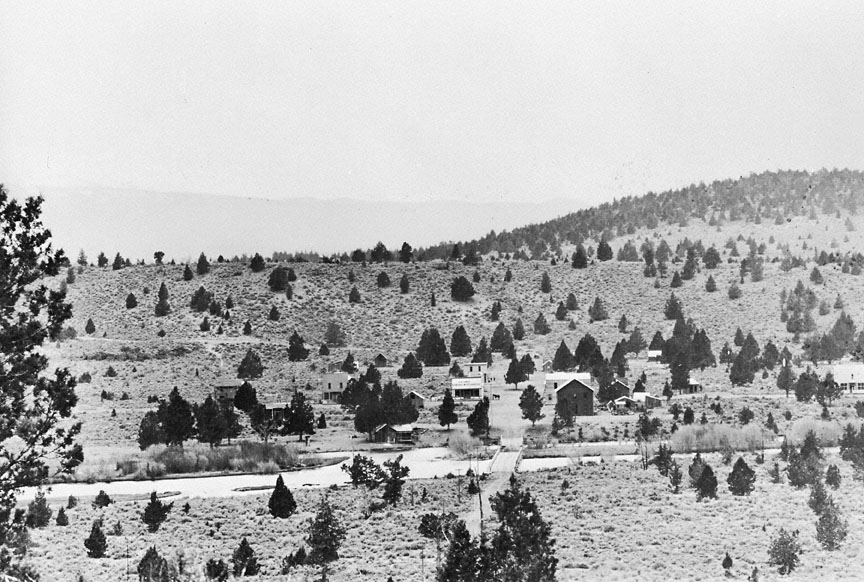This is a photograph of the central Oregon town known as Laidlaw in 1905. Within a few years, the name Tumalo came into general usage, and the name was officially changed in 1915.
The area around Tumalo Creek, which flows in the Deschutes River, is located within the traditional territory of the Molala Indians. The first Euro-American settlers arrived in the 1880s and by the 1890s began to organize the first irrigation project in the area. Large-scale irrigation was essential for farming. The landscape is arid and in many locations the water table is located hundreds of feet below the soil. The history of the Tumalo Irrigation District in the early decades of the twentieth century is a cautionary tale about the hazards of water-development projects funded by private-stock investment companies.
Through the first decade of the twentieth century, the Three Sisters Irrigation Company and its two successors owned and managed the Tumalo irrigation project. Under the provisions of the Carey Act, passed by the U.S. Congress in 1894, up to 160 acres of arid land (in the American West) were made available to any family that agreed to settle and improve a portion of each state’s federal land grant. Water projects for irrigating the arid land—a process also known as reclamation—would be financed by private enterprise. Policy makers intended the states to contract with private construction companies to build the irrigation works; the companies would then sell the water rights for the return on their investment. Such was the case of the Tumalo irrigation project as initially developed by the Three Sisters Irrigation Company and its successors. Unfortunately for local water users, the Tumalo project proved disappointing for the first few decades.
The difficulties with the Tumalo irrigation project stemmed from a variety of factors. In contrast to the homesteaders who sought to develop working family farms in the Tumalo Creek area, the investors behind the project focused their attention on land speculation rather than on the sound construction of irrigation works based on the latest engineering and scientific methods. Additionally, the state of Oregon initially declined to invest the personnel and financial resources needed to adequately oversee the Tumalo irrigation project. As a result, the poorly planned and constructed irrigation works could not provide enough water on a consistent basis to fulfill all the water needs of the growing Tumalo community in the early decades of the twentieth century. Lacking the necessary water, local farmers were unable to produce enough crops to pay the mortgages on their land and their irrigation fees.
Since the private investment companies could not sustain the project, the state of Oregon took control of it in 1912. State ownership and management of the Tumalo project was one of several notable developments that marked a change in Oregon’s political culture during the tenure of the progressivist Governor Oswald West.
Further Reading:
Winch, Martin. “Tumalo—Thirsty Land.” Oregon Historical Quarterly 84, 85, 86, 1984-1986.
Pisani, Donald. Water, Land, and Law in the West: The Limits of Public Policy, 1850-1920. Lawrence, Kans., 1996.
Pisani, Donald. Water and American Government: The Reclamation Bureau, National Water Policy, and the West, 1902-1935. Berkeley, Calif., 2002.
Written by Melinda Jette, © Oregon Historical Society, 2004.
